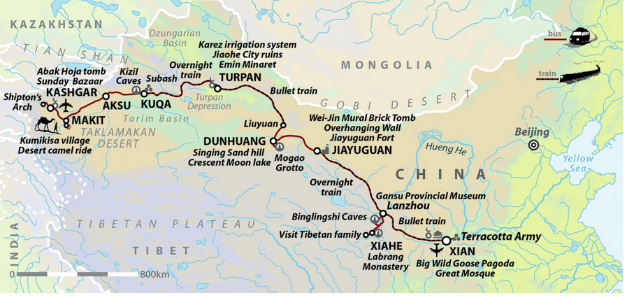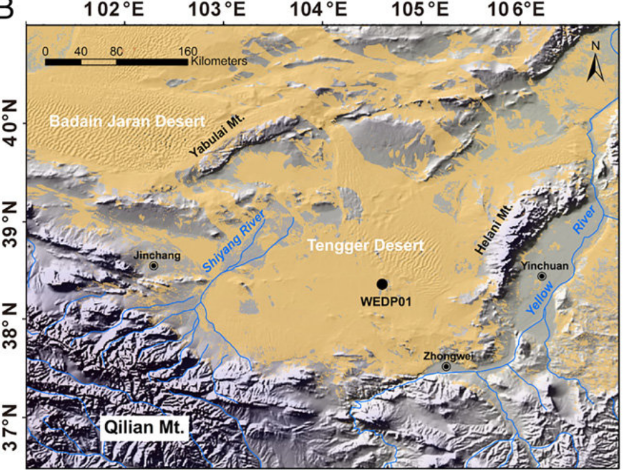Fiona_HOD:
Wow so much information stated. Amazed with the work you had done for us viewers. Thank you.
twinty:
Thank you so much for doing this! You are amazing. I appreciate you!
BrightStar:
Thank you for this. Looking forward to it!
Thanks for liking! We still have all the Sū Mùzhē episodes upcoming now in second half of this amazing drama, which is topping charts over LGIEF :) Enjoy the drama, and come back later to check latest infos! or add / correct anything I missed ;)
Frost_edelweiss:
Thanks for liking! We still have all the Sū Mùzhē episodes upcoming now in second half of this amazing drama, which is topping charts over LGIEF :) Enjoy the drama, and come back later to check latest infos! or add / correct anything I missed ;)
I am enjoying TSOPG so much! It is beautifully done. I am not surprised it ranked #1 on Vlinkage this week.
come back later to check latest infos! or add / correct anything I missed ;)Frost_edelweiss:
I appreciate so much what you've done here that I've refrained to object anything in your historical exposition, but now that you've said "add or correct", I'll try to articulate my objections.
Premise: We know the setting is in Tang dynasty, but we have no idea of the exact year/era/rulership. It is important to know - if we want to evaluate how close and truthful is the drama setting to real history and real Silk Road route of the time - because the borders of Tang empire expanded and streched continuously.
1. I think the author(s) deliberately omitted this important data, partially because the political conflict of two princes is fictitious (that's why they can't tell who is the ruler of the moment) and partially because they invented Lánghuán (as you've correctly pointed out), but the reason why they invented such a place was to conceal its similarity to Gāochāng - Turpan, fortified city which was (differently from other cities in Tarim Basin) directly annexed very early to the Tang, by emperor Taizong (as quoted in the link you've provided, too) and turned into a seat of Anxi (protectorate to pacify the West) and the central commandery of 4 garrisons stationed in other four cities of Tarim Basin. The city, mainly populated by Han people (residing there for centuries together with merchants of other ethnicity), was full of soldiers, ie., definitely impregnable by some "black dragon" bandits, as it happened in the drama. It was impregnable even for a serious army, Tibetans conquered it only during Wu Zetian interregnum, after the complete withdrawal of the soldiers from the area and when they've already conquered Chang'an. In later Tang, the whole area was under Uyghur Khaganate, which had alternate close-distant (frenemy) relationship with Tang. Uyghurs converted en-mass to Manichaeism as to underline their closeness to Sogdians (who were Manichaeans) and distance from Tang (in late Tang, Manichaeism was banned and persecuted to the death). In that period of time, trade on the Silk Road was reduced only to what Uyghurs obtained directly from Tang - usually silk - as a compensation for military services they've offered from time to time to the Tang, helping Tang to quell rebellions (and sacking thoroughly rebelled cities in the process, as they've done twice with Luoyang, so the origin of traded South Chinese Sea pearls and other jewelry was more likely from the loots taken in those cities than from a fair exchange of goods), no way merchant caravans could have travelled so freely as shown in the drama on the route under the Uyghur protection, that trade was monopolized and even de-routed from cities in Tarim Basin to their capital in Ordu-Baliq
2. Silk Road. I have no objections regarding the first part of your exposé (sea and river-canal routes), but as we see from point 1, unless the drama setting is in that brief period of Tang's direct military control of the road (and that setting would contraddict fictional events in the drama, in particular black dragon band), "pacified neighbourhood" mentioned in the drama never existed either. The trade itself (intended as free exchange with payment of local taxes for protection of the route), paradoxically saw better times during the Göktürks rule with trading centres like Turpan or Kashgar "decentralized", ie. given in management to local lords like Qus (who were ethnic Hans) of Gaochang. No wonder your links can quote written proofs of a flourishing exchange only for the period of time prior to Tang. But military expedition towards West was necessary, because Tibetan empire controlled the southern (south of Taklaman Desert and north of Kunlun Mt) route of the Silk Road, which connected Anxi and Dunhuang with Kashgar (the route taken by Marco Polo a few centuries later, after passing the Hindu Kush) threatening to cut out the northern, too, so the military deterrence was the only option left to secure the trade with regions referred as Transoxiana (geographical, politically neutral term). Gaochang/Turpan was strategic, there were two routes from that city, the southern along the southern side of Tian Shan through the desert leading to Kashgar and northern (north of Tian Shan and north of Issyk-Kul saline lake in today's Kyrgizistan) leading directly to Tashkent, Fergana valley, Samarkand... that route was more comfortable, with healthier environment compared to the desert and full of trading centres along the road...
3. Samarkand. During the period of expansion, Tang forces conquered it, toghether with the entire area of today's Uzbekistan which more or less coincides with Kāngjū (term in Chinese sources) and Sogdiana (Western sources), establishing a protectorate over it and imposing tributary obligations to it. The term Kang has nothing to do with Samarkand, the link you've provided quotes different hypothesis for the origin of Chinese name among which the less credible is a distorsion of Tocharian "kanka" (one of the words for stone). Both Tocharian and Sogdian are Iranic (ie. highly mutually intelligible) languages. The meaning of Samarkand is "(fortified) city of stone", "-kand" in Iranic languages means city or fortification, it influenced (or was influenced by) Turkic languages in which -kent (as in Tashkent) has the same meaning. All five protectorates established by Tang were multiethnic melting pots and except for Anxi (losing it would directly harm Tang's interests and there was a direct threat at the time)... a very bad idea. With such a huge expansion (and obligation to protect in change of tributes), Tang overreached its capacities: Sogdiana and Tocharistan will be lost to Umayyad Chaliphate (who made Samarkand a center of Muslim expansion in Central Asia, razing Zoroastrian and Manichaean temples to the ground, forcibly converting or resettling its inhabitants) in Battle of Talas, significantly depleting Tang forces, while Mengchi and Kungling will be lost to the Second Turkic Khaganate.
This is how the history of the Silk Road during real Tang should be (more or less) outlined, we can't mix data from other, different period of times or sweeten the reality of the time only because we are watching a drama, we all know the reality is different from the fiction. The fact that the production hired an expert in history of pearl trade (who certainly helped with props, although he could have also tell them that other gems, like those YZJ shows to Duanwu are rarely spheric, especially there are no spheric emeralds in nature, they are crystal baryls) doesn't mean they didn't sacrifice true historical facts for the sake of storytelling of what is basically a fictional idol drama.
There are some other minor things, as for eg, "Hexi corridor is a long valley that starts north of Dūnhuáng " No, north of Dunhuang is Tarim basin, Taklaman Desert. The Hexi Corridor is a long, narrow passage stretching ("streched" between Qilian Shan and Gobi Desert) in northwest direction for some 1,000 kilometres from the steep Wushaolin hillside near Lanzhou to the legendary Yumen Pass also known as "Jade Gate". Hexi corridor was a link, a passage obligé between "inner China" (fertile lowland with Central Plains) and so called "Western regions" which start passing Yumen. Dunhuang is the oasis in Western Regions situated on the southern route of Silk Road from city of Anxi (controlled by Tibetan imperial forces at the time).
Anyways, I also want to thank you because you've provided a lot of interesting information, even adding and explaining Chinese names and words (I'm not a Mandarin speaker), incredible work. I'll read your updates.
@AleksandraSucur
Thanks for your input and correction of the exact location of Hé Xī corridor and Dūnhuáng. Although I traveled all those parts back in time, Níngxià to Yínchuān and beyond in the Tengger and Badain Jaran desert, Dūnhuáng, Yùmén Guān, Turpan, Kashgar...: I roamed so much that my memories were a bit jumbled and "mirror" reversed (!)
So, I've corrected my rash attempt at "sketch maps" (I have not got a really good software for it, sorry for being non professional there, but I tried to pinpoint with arrows when possible to show where was what even if my first attempt was not precise enough). It should probably be more like it now. Below, is another map illustrating your point. Beyond the "Hé Xī corridor", Hé Xī is in fact also the name for "the land west of the Yellow river" : Shǎnxī, Qīnghǎi and Gānsù provinces, so a map from the History book has Hé Xī stretching all the way to Turpan, called Xīzhōu on that map of Táng dynasty places.
 Of course, the drama is not accurate in details. The novel was imagination, not a treatise about ancient Táng life and concerns and the drama was never intended as a documentary on ancient History. The drama focuses on the fictitious characters for entertainment, sometimes falling into tropes, and does not refer to actual people, as you noted: the princes "struggles" and the "anonymous" emperor are setting the story in a more imaginary impression of the dynasty than a precise point. It focuses on beauty, but costumes, accessories, water-sleeves, musical instruments and shapes are certainly more aiming to satisfy present day audience than giving an accurate account of the shapes, colors, materials of the period (although some care with the historian consultants must have weighed in). It sometimes achieves reasonable success (I liked the jewelry designs). That it is more realist than most in that sort of dramas is only icing on the cake.
Of course, the drama is not accurate in details. The novel was imagination, not a treatise about ancient Táng life and concerns and the drama was never intended as a documentary on ancient History. The drama focuses on the fictitious characters for entertainment, sometimes falling into tropes, and does not refer to actual people, as you noted: the princes "struggles" and the "anonymous" emperor are setting the story in a more imaginary impression of the dynasty than a precise point. It focuses on beauty, but costumes, accessories, water-sleeves, musical instruments and shapes are certainly more aiming to satisfy present day audience than giving an accurate account of the shapes, colors, materials of the period (although some care with the historian consultants must have weighed in). It sometimes achieves reasonable success (I liked the jewelry designs). That it is more realist than most in that sort of dramas is only icing on the cake.
The reasons for starting a business against the odds, at heart here, are reflecting the promoted present-day model to accept challenges and pursue one's dreams. As ZLS answered her interviewer : "Have you experienced starting a business and failing?" Yes, if so, what do you do then? Lie down and die of shame, or start over by whatever means, claw your way up again to stand! The use of place names that did exist is more a wink to novel readers and drama audience to go : look further, read real History and more if so inclined, and perhaps : visit the remnants of the past in enjoyable travels, for those who have time and means to do so, and compare with present day development. Meet people, look for real opportunities. It can be jewelry... I happen to have had once a neighbor who started jewel designing with Tahitian black pearls.
I hope you still enjoy the drama without being too irked by its "poetic licence"and sometimes "mistakes" (the "raw" gems - yes, probably, but I am not a specialist anyway) .
I had a look at PeachBlossomGoddess' impressions which of course have merits, in comparing dramas. PBG is not totally enthralled but admits TSoPG is "good enough". ... ok. It still entertains me enough, so I will try to avoid reading too much negativity about it : it's too easy to criticize c-dramas and label them dismissively as "idol drama", but it always is "hard to achieve art" and sometimes, gems go unnoticed. There are certainly some (not too major despite the bloodbath) "bumps in the road" in TSoPG from my point of view, but not enough for me to look away in disgust and shoot it down. It's early days to foresee the rest and I am not going to use the fast forward button to prove a point of disappointment just because of some potholes on the highway! Dramas all have such, it is not damning :). If the millions who watch are satisfied, who am I to tell them they are applauding for no reason.
PS. You like beryls? I have one such that I was handed from family. Very simple, on a slender gold band, greenish, like deep water: one of my favorite, apart from an ancient blue-grey moonstone ring, a diamond ring, and a blue aquamarine. From my travels I also took home opals, Tibetan lapis lazuli from Kashgar, a Hotan (和田 Hétián) white jade pendant carved as ganoderma found in a small family boutique in Beijing where I got a green ruyi pendant too, and some bangles, including a few just pretty ones in cloisonné, plus a couple cloisonné nail covers (sharp and long, old empress style, lol)... But no, I haven't got a coffer full of jewels! and my pearl strings are not wild ones: they are souvenirs from aquaculture pearl farming areas, around Yángshuò and south of Nánjīng, although my first pearl was mounted on a gold ring and a gift to myself for my first paycheck abroad. I also have a black Tahitian pearl pendant, gift from a former acquaintaince who worked as a jewel designer and asked me to help craft some ads and brochures for her. Anyway, I am not a gemmologist or a collector... Just liked what I got and found, even if it has more sentimental than real value ;)
PS. Taklamakan is not north of Dūnhuáng, it is far to the west. North of Dūnhuáng it's still the Gobi desert and the Yùmén Guān, remnants of Great Wall, and beyond, sometimes less pebbly and bare soil parts with sand dunes and oases such as in Tengger and Badain Jaran, from where I have epic memories of caravan camel riding and army landrovers whizzing and zigzagging over the dunes to avoid getting buried in the flying sand. Found another even more precise map :
And about those other deserts I mention, here is another map :
sorry for being non professional thereFrost_edelweiss:
Believe me, I'm totally amazed by your skills, these maps look perfect to me (I wouldn't even know how to upload these charts here)! It isn't easy to make them at all, pinpointing the important locations, it's such a fortune to have you on MDL. I also feel your genuine enthusiasm to share with us what you've experienced in your travel there (I'm very grateful to you for this and understand when memory jumbles due to the emotion). I have friends from Croatia who are there right now, I've thought to go with them but wasn't completely satisfied with their agency trip planning (it includes too many days in other Chinese locations, while I was mostly interested in a route you've travelled, from Xi'an to Kashgar). I'll see them next summer, if they decide to return to this region, I'll go with them, if not, I'll find someone else to travel with.
I am not a gemmologist or a collectorFrost_edelweiss:
Neither am I, I've just happened to see an emerald mine in Austria (Habachtal) when visiting NP of Hohe Tauern with my son (he was a kid back then), their baryls are formed ("geminated" is a technical term) in a schist matrix and although their texture is hard, they maintain the "schistose" property (schist derives from Greek verb σχίζειν, to split), so they can take only this baryl form and can be cut only in forms that respect linear and sharp angular "layers" typical for schist, which, despite being soft (containing a lot of granular material), splits along the plane in which the platy minerals lie. These forms are typical for quartz, too, and some types of quartz are formed in the schist as well. Tourists visiting Hohe Tauern can also search and freely take emeralds they found in schist blocks descarded in several water-courses. I am not particularly interested, but I often explore the mountains (Alps), so I regularly incidentally bump into museums or expositions of minerals, stones and gems, the last one was on Mt Blanc (the highest European peak, 4.800 m) Skyway 2nd cable stop at 3.800 m a.s., at the beginning of this year, quite a surprise (especially for a head buzzing due to the low air pressure), very rich and well-explained collection. That's the only reason why I've got some knowledge, without particularly searching for this matter. I personally rarely buy souvenirs but I'd not say no in front of the things you've collected along your journey. I have several (never worn) silk scarfs and fans gifted by people who returned from China, but I don't have cloisonné nail covers! Thank you for this hint, now I'll text to my friends telling them what I want as a gift from their trip, I'll certainly wear them, lol :)))))
Taklamakan is not north of DūnhuángFrost_edelweiss:
I had in mind the "southern route" of the Silk Road from Turpan, connecting Dunhuang with Kashgar via Hotan. Yes, it's westwards from Dunhuang, because the route is a mild semicircle, but generically, it's northwards from the middle part of the route. The first city conquered back then by Tibetan army was Hotan, where you've been, I've seen on internet the deposits of jade, that must have been an experience!
As for the drama... I agree with you it still offers some true geist of Tang and despite being disappointed with the turn it took, the first episodes promissed more power intrigue and despite irritating plot holes (in today's episode again, these black dragon bandits, first unexplainably abandoned by YZJ who must take his revenge over them, now pop out as illegal traders/transporters of looted jewerly, robbed from whom btw? This way of storytelling is just too weird), I continue to watch, as you see. It is true the props are better than in other dramas (and convey some true information to the audience, as CSJ said to Duanwu today: "jewerly is to communicate a status symbol") set in this period but this doesn't change the fact that the core plotline is quite common for costume idol-drama romance: from uncomfortableness to love -> misunderstanding & break-up -> FL collects her strenght, rises up, opens her own thriving business etc. So the meaning of "idol-drama" was not dismissing, it's just "we've seen this evolvement so many times", "it's not that original after all".
Thank you for this conversation, even if I don't enjoy the drama that much, I truly enjoy our exchange.
cloisonné nail covers!AleksandraSucur:
These are not easy to find. I got them many years ago, before Dàshilànr 大栅栏 the old shopping street/district (very long) south of Tian'an Men was overhauled and transformed in view of the Olympics and more, once China won that bid. The small antique goods shop was closing... (I have no idea which princess sported those claws before me, but it was fun ; can't use them for playing my guqin anyway: it's just a curio). But cloisonné is still a craft with a factory in south Beijing where one can peruse the pretty bangles, pendants, etc, and purchase them at reasonable prices.
Traveling is fun, but takes time, a fit condition, and funds... Anyway, if you click on the next to last map above, there is a link to a, I think reliable, "wild travel" company? You need to be fit and preferably know some language +have a good translating app maybe. Some things can't be taken home, like antiques or fossils, anything over 100 years old, and Xinjiang knives are not allowed even in checked luggage... ;) Still, if you are ready for the experience, and not afraid of culture shock, different tastes... go for it. I don't think you really need any vaccine btw (what they wrote: yellow fever? malaria? no, you'll be unlucky if you get sick, provided you take elementary common sense precautions.) -- good luck!
Annex to the Companion PieceFOOD IN THE STORY OF PEARL GIRL |
In different episodes, we see traditional Chinese food from the South to the North, where the big round flatbreads called naan or 馕 náng have been made for centuries, accompanying travelers on the Silk road with their slightly oily taste and filling bread, sprinkled with sesame seed, and decorated with geometric designs using a "bread stamp, like in the picture below.
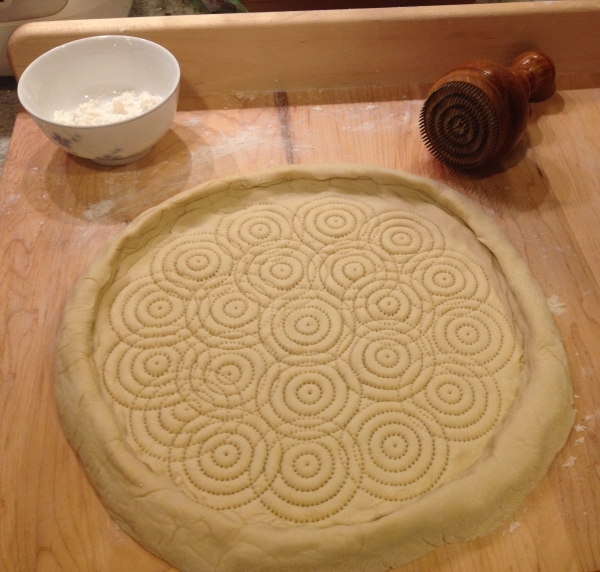 |
Some episodes also feature festival foods such as, in episode 39, the 腊八粥 "làbā zhōu ".
粥 Zhōu (also named "congee" in the South) is a mix of grains and other ingredients cooked in water and served mostly hot for various purposes : it is a healing-all recipe for many health trouble! A more filling variation on the "drink hot water!" popular prescription! In Chinese medicine, the Kidney qi supplies the fire for warming the digestive fire to support digestion. 粥 is a nourishing food because the warmth supports normal Spleen qi function even in times when the Kidney qi may be weakened.
According to popular tradition, this porridge has been made since the Han dynasty. In fact it was used as an offering to the gods before the 5th century, when the date of Làbā Festival was set, marking the beginning of the Chinese New Year festival period preparation before the new moon three weeks later (it appears between 21 January and 20 February, in the Gregorian calendar). Next year, the date will be Jan. 7, 2025 before Chinese New Year which will start on Wednesday, Jan 29, 2025, and last until Lantern festival on Wednesday, Feb 12, 2025.
 |  |  |
From the 5th century, the festival porridge became consumed also by the people. After Buddhism spread to China, Buddhist monks would cook congee/porridge using various grains and beans to commemorate the suffering of Buddha on Bodhi Day, the enlightenment day of the Buddha, and give the congee/porridge to devotees. Over the years, it became customary for Chinese people to eat làbā zhōu on 八 (bā) 8th day of twelfth month of the lunar calendar, called làyuè 腊月.
The earliest form of this dish was cooked with red beans and has since developed into many different kinds. It is mainly made up of many kinds of rice, beans, peanuts, dried fruit, lotus seeds, etc. There are many variations of Laba congee in different regions of China. Ingredients can include mixed grains, such as rice, millet, and barley; beans and nuts such as mung beans, azuki beans, lotus seeds, peanuts, walnuts, and chestnuts; dried fruit such as red dates, longan, raisins, and goji berries; and it can even feature ingredients such as vegetables and meat, tofu and potato.
It is also known as "eight-treasure congee" (八宝粥; Bā bǎo zhōu) and is usually made with eight or more ingredients, representing good luck. 8 is a lucky number in China, and the bā in Làbā also means 8.
Easy recipe : Gather all the ingredients (3 grains, 3 fruits, 2 other, optional rock sugar). Soak the grains and beans in water. For super tough beans (like red beans and black beans), soak for at least 6 hours. The rest can soak for 3 hours. There’s no need to soak raisins and dried jujube. -- Drain the beans and grains. Place everything except the raisins into the rice cooker and fill the water to the 1.5 cup mark for porridge. For 1.5 cup porridge ingredients, it takes approximately 1 hour to complete the cooking process. When the rice cooker completes cooking, open the lid and add the raisins, stirring to combine. Add sugar if you prefer a sweeter version. The Laba congee/porridge is best served when it is warm.
Without a rice cooker, just add all the pre-soaked ingredients plus dried jujube into a medium saucepan and add about 3 cups of water. Close the lid and bring the sauce pan to a boil. Once boiling, lower the heat to maintain a simmer. Continue simmering for 40 minutes or until the beans and grains are cooked to your desired softness. Once done, add the raisins, stirring to combine.
A variation of this porridge, as suggested in the drama, is to make a Longevity porridge (长寿粥 Chángshòu zhōu):
This can be made with 10 ingredients, "food substances that are frequently used in Chinese soups", like in this recipe, or using modern recipes such as this "Shaolin monk" vegan eight-treasures adapted recipe, or the "medicinal Longevity Porridge" of Master Zhu (1913-2006) which is "is a powerful Chinese medicine recipe for restoring depleted energy and preventing aging, disguised as a delicious food. " The latter uses for 5 servings :
- - 50 g Mung beans (绿豆 Lǜdòu)
- - 50 g Lotus seeds (莲子 Liánzǐ)
- - 50 g Coix seeds (薏苡仁 Yìyǐ rén)
- - 50 g White hyacinth beans/lentils (扁豆 Biǎndòu)
- - 30 g Jujubes (大枣 Dà zǎo)
- - 10 g Goji berries (枸杞子 Gǒuqǐzi)
- - 50 - 250 g Astragalus (黄芪 Huángqí)
(The inclusion of astragalus in the latter also occurs in a very similar recipe, to be found in Chinese here together with other 粥 recipes to withstand the health ailments of the cold season!)
Noodles and veggie dishes
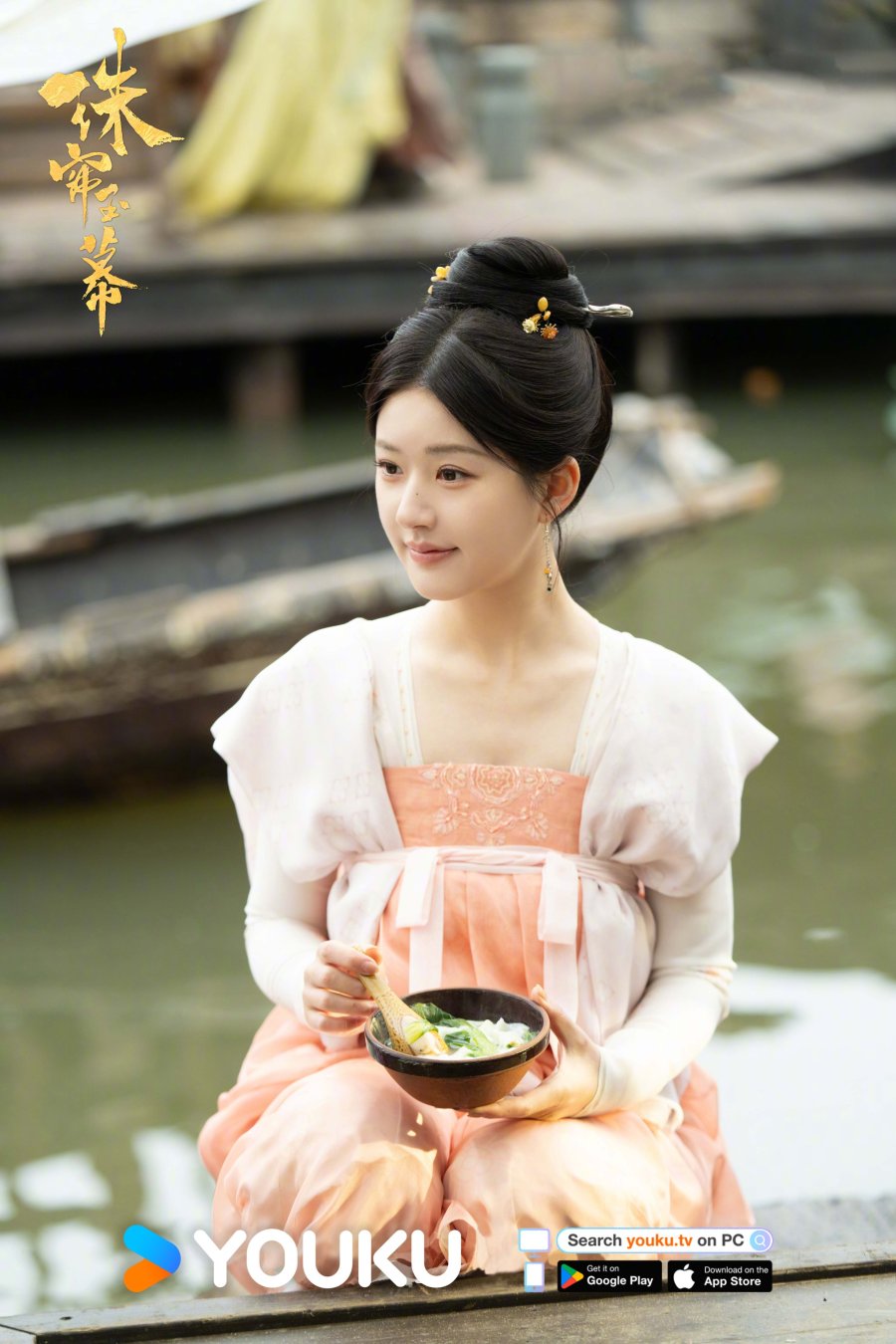 |
Simple healthy fruit snacks
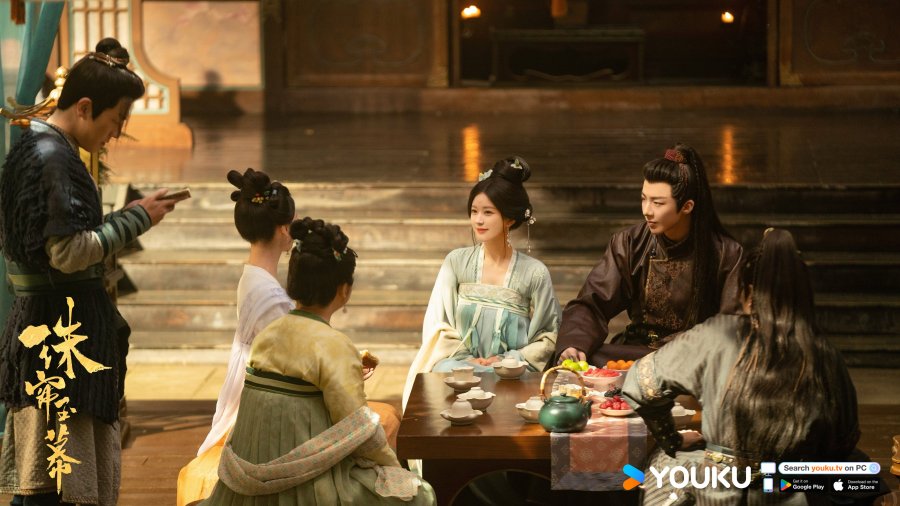 |  |
 | 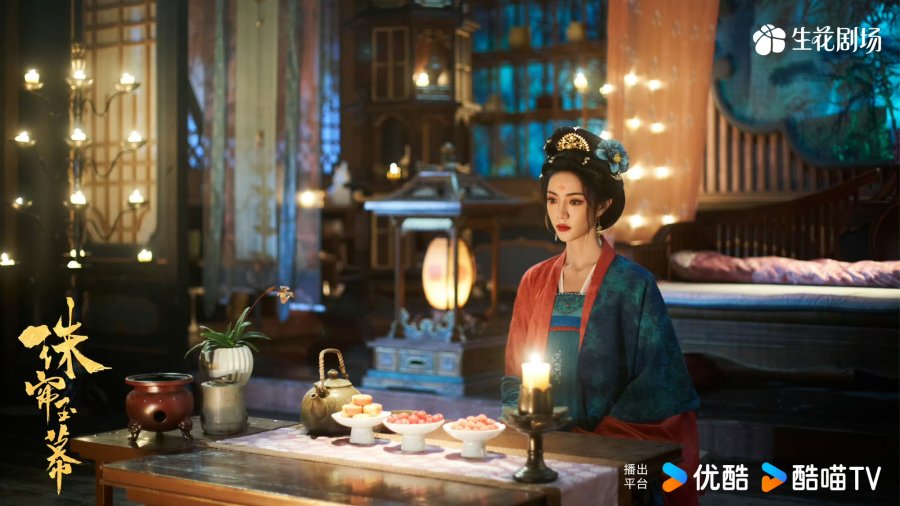 |
Link back to Table of Contents (may be added to on rewatch)
Recent Discussions
-
About ZYZ's morality nd how it ties to the story4 minutes ago - nabi
-
The Real Hero & Characters' Symbolism (contains spoilers)6 minutes ago - nabi
-
** Moon BAR + Starlight KTV + Moon SPA **12 minutes ago - unbeliebubble
-
Who is Kunwu? Process of elimination20 minutes ago - PeachBlossomGoddess
-
What’s for dinner?27 minutes ago - daydreaming
-
BL Drama Lovers Club28 minutes ago - Jadeheart
-
TLOW's Episodes and ARCs35 minutes ago - Cahane
-
Last Drama You Completed? #21 hour ago - AlfatogodeQFBere
Hottest Discussions
-
21 F too late into dramas?4 hours ago
-
Change 1 letter to make a new word #212 minutes ago
-
10 dramas/movies with ____? #411 minutes ago
-
***Count to 100,000***8 minutes ago
-
Word Association #46 minutes ago


